
This is a guest post by Joanna Pocock.
I can’t imagine many biographical novels about anarchists begin with the subject lying in bed as a child, hand between thighs, pleasuring herself. But Ethel Mannin’s Red Rose (1941), a fictionalised biography of the Russian Jewish anarchist Emma Goldman (1869-1940) does just that. Goldman’s childhood crush, a teenage boy called Petrushka, looked after the family’s ‘horses, and tended the sheep and cows in the field. Petrushka was tall and strong; quiet and gentle,’ Mannin writes. She then describes a game the young Emma played with him in which he,
lifted her up and suddenly flung her above his head, catching her as she fell and pressing her against him as she slid to the ground, so that she knew the body smell of his shirt and the animal smell of his coat, the warmth of his strong hard body, and the grip of his rough gentle hands. …there was no fear in this excitement, it was pure ecstasy.
Then Mannin paints this scene:
And it came again in the warm dark secrecy of the nights, so that childish hands pressed down between the remembering thighs in an attempt to recapture the sensation, and the darkness would be alive with Petrushka’s brown smiling face, the smell of horses, cattle, sweat, and the fields. Petrushka became her last thought on falling asleep and her first on waking.
Throughout her life, Goldman had an active sex life and many lovers. In her younger years she was in a ménage a trois with her soul mate, the anarchist and writer Alexander Berkman, and an artist who lived with the couple. They were not lovers for long, but their deep spiritual and political union lasted for the rest of their lives. As she aged, Goldman felt increasingly bitter about the uneven opportunities for men and women on what we would now call ‘the dating scene’. Berkman (the fictional Sasha in the book) had fallen in love with 20-year-old Emmy (Elsa in the book) whom he’d met in a café in Berlin when he was 52.
They were together until he died by suicide in June 1936. Mannin describes this as a thorn in Goldman’s side: ‘A man could age and lose his looks,’ she writes channelling the voice and mind of Goldman, ‘and still command the passionate love of the young and beautiful; it was not easy for a woman. Her business was not to desire but to be desired, and when her desirability was ended her desires were expected to die automatically—and the tragedy was that they didn’t. No one thought it wrong for a middle-aged man to desire a young girl, but everyone was horrified if a middle-aged woman showed other than a maternal interest in a young man.’
Mannin is sympathetic to Goldman’s desire not just for a fairer world but for a fairer playing field for women. A committed socialist and feminist herself, Mannin was also no stranger to love affairs. Like Goldman, she came from humble means; her father was a postal worker and her mother was a farmer’s daughter. Born in 1900, she supported the anarchist cause and fought for sexual liberation. In between her two failed marriages, she had affairs with W. B. Yeats and Bertrand Russell. Part of the pleasure of reading Red Rose, is the satisfaction of reading the life of a complex and politically driven woman as constructed and shaped by a female author who one senses has a strong kinship with her subject.

The first two thirds of Red Rose feel more like a straightforward biography than a work of fiction because in these segments Mannin is basing her novel closely on Goldman’s autobiography Living My Life, which ends in 1928 – twelve years before Goldman’s death. The latter part of Red Rose had no memoir to rely on. Those final years of Goldman’s life needed to be ‘reconstructed from various sources—including imagination’, Mannin tells us in her short introduction. ‘And it is precisely that part of her life which I have had to reconstruct which has most interested me as a novelist, and which she urged I must “one day” write.’ This explains the tonal shift in the final third of the book which is imbued with a stronger imaginative power and a more novelistic sweep.
The two women met in the late 1930s when they were working on behalf of Solidaridad Internacional Antifascista (SIA) – the anti-fascist faction fighting against General Franco’s Spanish Nationalists. There is no historical documentation of their meeting, but there is one photo of them, from 1937, when Goldman came to Britain to speak at a London meeting in support of the Spanish Confederación Nacional del Trabajo (CNT).

In the photo, we see Emma Goldman, aged 69, standing, shoulders back, delivering one of her fiery speeches. Ethel Mannin, hair pulled back severely would have been 38 in this photo – she looks off to the distance, wearing a serious expression. James McGovern, an MP, is furiously making notes. A year after this photo was taken, Emma Goldman would die from a stroke suffered in Toronto. Her body was allowed back into the US and she was buried in Chicago.
Goldman’s many affairs and two failed marriages feature prominently in Red Rose. Her second marriage was to the Welsh Miner James Colton (Jim Evans in Red Rose) is mentioned only three times in Goldman’s memoir, whereas Mannin brings in her novelist’s eye to this episode turning it onto a somewhat bittersweet affair. There was never any hint of a sexual relationship between the couple, and Mannin describes how after the registry office wedding, ‘When the marriage was affected,’ Emma ‘was impatient to get away. She realised that it meant disappointing Evans, and to “compensate” him she slipped him a ten shilling note on the station platform, urging him to “treat” himself and one or two of “the boys” to the pictures.’ There is a sense in Mannin’s description that the fictional James Colton, was in some ways humiliated or at the very least disappointed by Goldman’s perfunctory approach to their union. As an anarchist himself, he was committed to the cause and felt honoured to be able to do something for the famous Emma Goldman, but Mannin writes, ‘He stood there, troubled, confused, fingering the note she had forced upon him, overriding his bewildered objections.’ It’s in moments like these, when Mannin inhabits the interior world of her characters, that Red Rose fully comes alive.
Goldman’s life, according to Mannin, was one of passion and struggle. She was incarcerated for inciting a riot but only served several short prison sentences. Most of her struggles centred around money: she never had enough of it and was often hungry and homeless. In order to feed herself and to fund her travels and lectures to spread the anarchist message, Goldman took on whatever work she could. As a young woman, she worked making corsets and then in a glove factory. She trained and practiced as a nurse, set up a massage parlour and had two failed attempts at running an ice cream shop. She had a go at being a street prostitute on 14th Street in New York which ended in ignominy. The gentleman who took her for a drink noticed that she was not cut out for the job. He took pity on her, and after buying her a drink, gave her ten dollars for the trouble it took her to put on a fancy frock.
Much of Goldman’s energy is taken up with fund raising, which Mannin, as a self-made woman describes with a profound understanding. Reading Red Rose is a glimpse into the life of Goldman and into the mind of Mannin. The novel doesn’t completely work as a piece of fiction, and yet, it does re-imagine how a life can be documented and how pushing the boundaries of imagination are crucial to creating a successful work of fiction – even one that sticks so close to biography. In feminist politics there is always a sense of a trajectory, of history moving with the times, but what we see here is not history as a passive inevitability progressing from one idea to the next but a sense that history can be shaped and created by women with the aim of a fairer world. It is the fact that Ethel Mannin took on such a vital and important subject and had the courage to fill in the gaps of Goldman’s life with her own imaginings that makes Red Rose such an important work in the library of women’s – and the world’s – struggles.
Red Rose: A Novel Based on the Life of Emma Goldman (“Red Emma”), by Ethel Mannin
London: Jarrolds, 1941
 Joanna Pocock is a British-Canadian writer currently living in London. Her work of creative non-fiction, Surrender: The Call of the American West, won the Fitzcarraldo Editions Essay Prize in 2018 and was published in 2019 by Fitzcarraldo Editions (UK) and House of Anansi Press (US).
Joanna Pocock is a British-Canadian writer currently living in London. Her work of creative non-fiction, Surrender: The Call of the American West, won the Fitzcarraldo Editions Essay Prize in 2018 and was published in 2019 by Fitzcarraldo Editions (UK) and House of Anansi Press (US).







 Which if literally true, of course, would have meant there was no point in applying to any bookseller. But what worked for Tom Sawyer and fence-painting seems to have worked for Woburn Books. Compared to most limited-run (530 copies, 500 of them for sale) books from 90 years ago, they’re still relatively easy to find and inexpensive. The list of Woburn Book authors included some still recognized names (G.K. Chesterton, D. H. Lawrence, Sherwood Anderson, Robert Graves, and Algernon Blackwood) and a few largely-forgotten ones (R. H. Mottram, Martin Armstrong, Stella Benson, Joseph Hergesheimer). In its review of the first set of Woburn Books, however, TLS made its opinion of the whole venture clear: “Here are three short stories, perhaps designed for invalids, since they are so light to hold and so clearly printed, besides having nothing to distress or agitate the mind in any of them.”
Which if literally true, of course, would have meant there was no point in applying to any bookseller. But what worked for Tom Sawyer and fence-painting seems to have worked for Woburn Books. Compared to most limited-run (530 copies, 500 of them for sale) books from 90 years ago, they’re still relatively easy to find and inexpensive. The list of Woburn Book authors included some still recognized names (G.K. Chesterton, D. H. Lawrence, Sherwood Anderson, Robert Graves, and Algernon Blackwood) and a few largely-forgotten ones (R. H. Mottram, Martin Armstrong, Stella Benson, Joseph Hergesheimer). In its review of the first set of Woburn Books, however, TLS made its opinion of the whole venture clear: “Here are three short stories, perhaps designed for invalids, since they are so light to hold and so clearly printed, besides having nothing to distress or agitate the mind in any of them.”







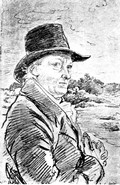 “In 1757 William Blake was born in London; in 1827 he died there; where he has been since 1827 I do not know.” This wonderful line opens Harold Bruce’s
“In 1757 William Blake was born in London; in 1827 he died there; where he has been since 1827 I do not know.” This wonderful line opens Harold Bruce’s 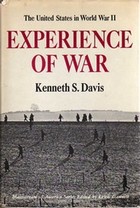 A very long time ago, I checked a book titled
A very long time ago, I checked a book titled 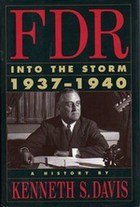 Despite the fact that Random House gave the fourth volume,
Despite the fact that Random House gave the fourth volume, 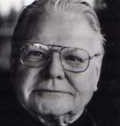 So is that the fate of Kenneth S. Davis? To have steadily and diligently written himself into oblivion? At the moment, all but his history of
So is that the fate of Kenneth S. Davis? To have steadily and diligently written himself into oblivion? At the moment, all but his history of 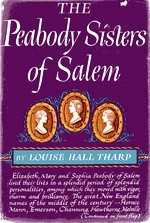 Louise Tharp Hall first celebrated the remarkable sisters in her 1950 collective biography,
Louise Tharp Hall first celebrated the remarkable sisters in her 1950 collective biography, 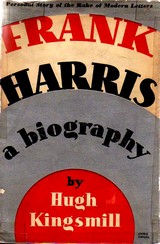 To keep the Fortnightly subdued and reassuring in tone was comparatively easy. But to lower himself to the temperature necessary to the comfort of his guests in Park Lane taxed Harris sorely. Yet, with a Royal Duke at his table, some measure of restraint was obligatory.
To keep the Fortnightly subdued and reassuring in tone was comparatively easy. But to lower himself to the temperature necessary to the comfort of his guests in Park Lane taxed Harris sorely. Yet, with a Royal Duke at his table, some measure of restraint was obligatory.